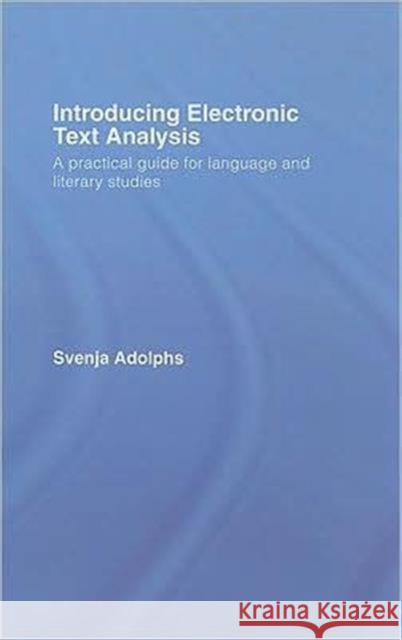Introducing Electronic Text Analysis: A Practical Guide for Language and Literary Studies » książka
Introducing Electronic Text Analysis: A Practical Guide for Language and Literary Studies
ISBN-13: 9780415320221 / Angielski / Twarda / 2006 / 176 str.
Introducing Electronic Text Analysis: A Practical Guide for Language and Literary Studies
ISBN-13: 9780415320221 / Angielski / Twarda / 2006 / 176 str.
(netto: 669,47 VAT: 5%)
Najniższa cena z 30 dni: 654,86
ok. 22 dni roboczych
Bez gwarancji dostawy przed świętami
Darmowa dostawa!
Introducing Electronic Text Analysis is a practical and much needed introduction to corpora - bodies of linguistic data. Written specifically for students studying this topic for the first time, the book begins with a discussion of the underlying principles of electronic text analysis. It then examines how these corpora enhance our understanding of literary and non-literary works. In the first section the author introduces the concepts of concordance and lexical frequency, concepts which are then applied to a range of areas of language study. Key areas examined are the use of on-line corpora to complement traditional stylistic analysis, and the ways in which methods such as concordance and frequency counts can reveal a particular ideology within a text. Presenting an accessible and thorough understanding of the underlying principles of electronic text analysis, the book contains abundant illustrative examples and a glossary with definitions of main concepts. It will also be supported by a companion website with links to on-line corpora so that students can apply their knowledge to further study. The accompanying website to this book can be found at http: //www.routledge.com/textbooks/0415320216
Introducing Electronic Text Analysis is a practical and much needed introduction to corpora - bodies of linguistic data. Written specifically for students studying this topic for the first time, the book begins with a discussion of the underlying principles of electronic text analysis. It then examines how these corpora enhance our understanding of literary and non-literary works.
In the first section the author introduces the concepts of concordance and lexical frequency, concepts which are then applied to a range of areas of language study. Key areas examined are the use of on-line corpora to complement traditional stylistic analysis, and the ways in which methods such as concordance and frequency counts can reveal a particular ideology within a text.
Presenting an accessible and thorough understanding of the underlying principles of electronic text analysis, the book contains abundant illustrative examples and a glossary with definitions of main concepts. It will also be supported by a companion website with links to on-line corpora so that students can apply their knowledge to further study.











